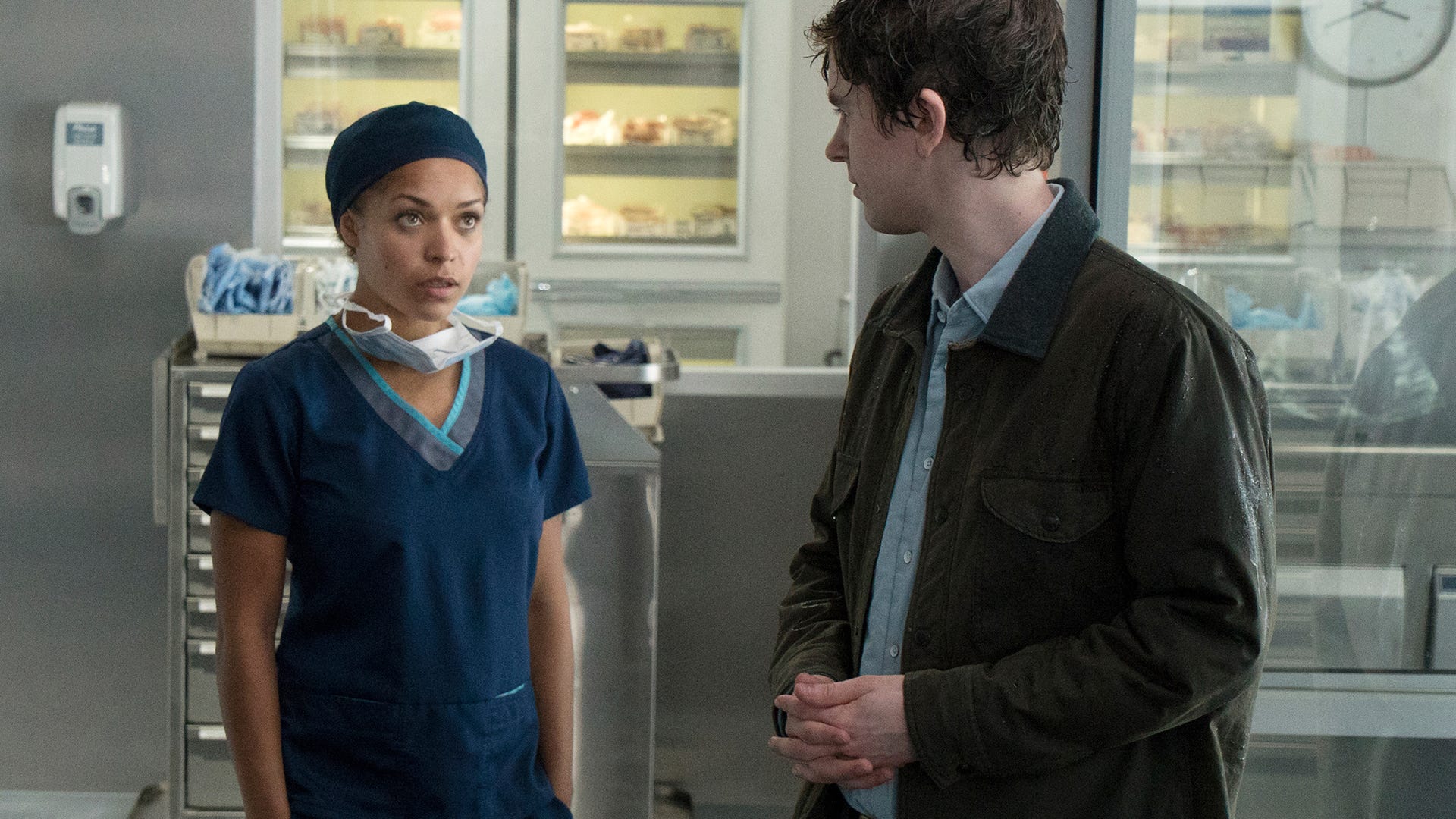Join or Sign In
Sign in to customize your TV listings
By joining TV Guide, you agree to our Terms of Use and acknowledge the data practices in our Privacy Policy.
The Good Doctor Joins Atypical in Proving There's No Singular Way To be Autistic
Is there a "right" way to be autistic?
The Good Doctor,which premiered Monday on ABC, is your standard hospital procedural. Tensions brew between colleagues; hot doctors are hooking up. There's a catch, of course: the newest addition to the team (and star of the show) is autistic. Surgical resident Dr. Shaun Murphy (Freddie Highmore) is charming, sweet, tender and all alone in the world for reasons that'll become clear by the end of the pilot. He earns our sympathies fast because of the show's schmaltzy tone, and because he's continually treated like a child when he's in fact extremely high functioning.
The Good Doctor comes just months after Netflix's charming Atypical, both of which have given autism the Hollywood treatment. And because both shows depict a complex condition -- one that prompts fierce feelings about how to best support and depict the community in the media -- they both are, like it or not, burdened with the duty of making sure their portrayals "get it right." Atypical, about a high schooler trying to navigate love and lust while managing behaviors -- like hitting himself when frustrated -- faced criticism from people such as autistic actor Mickey Rowe, concerned that Sam (Keir Gilchrist) was the butt of a joke. Rowe also pointed out in a Teen Vogue editorial that Sam frequently did things, like wearing headphones, that were inauthentic.
So does Good Doctor do any better? Does the show present autism the right way or does it leave room for improvement? Yes.
There's no one way to depict or represent autism, as Lisa Goring, director of the Family Services program at leading organization Autism Speaks told TV Guide. "It's often said that if you've met one person with autism, you've met one person with autism." As someone who watched both The Good Doctor and Atypical -- and writes about her experiences with her autistic son -- Goring says that first and foremost, "We're excited people with autism being portrayed."
For people not on the spectrum watching these shows -- neurotypical adults for whom these programs will be the most enlightening -- it's easy to pick up that The Good Doctor's Shaun is different than those that surround him. In the pilot, his biggest challenges are blurting out observations most people consider taboo, and asking questions that are understood to be off-limits, all of which suspiciously reduces his condition to a charming, palatable quirk. He's not just a genius and savant, he's a life-saving surgeon too, which effectively squares Shaun into the often portrayed "disabled savior" trope. It's as if he exists primarily to teach people around him -- mainly the audience -- a lesson.
Suspicions that The Good Doctor oversimplifies autism aren't quelled when one considers that the show, like Atypical, currently doesn't have autistic writers, producers or a lead actor. Both shows instead rely on the input of consultants, a point of major contention for some in the community.

Antonia Thomas, Freddie Highmore; The Good Doctor
ABC/Liane HentscherBut as Goring is quick to point out, autism is a wide spectrum. That means one autistic person can be high functioning like Shaun (or like actor Dan Aykroyd!), especially gifted in some areas (like math say, or the arts) while someone else might have difficulty speaking, or need help controlling repetitive behaviors like Atypical's Sam.
So yes, The Good Doctor scene in which Shaun saves a guy's life by MacGyver'ing a surgery on an airport floor using a bottle of Jim Beam and a box cutter seems a little silly, but the skills that gave him the ability to do it -- the images and text he sees in his head that guide him -- are very much true to life.
Indeed, portrayals of people on the spectrum could be more sophisticated; Goring says she'd like to see some female autistic characters as well as some of its other complexities. She was hard pressed to see how having autistic writers and producers on the show would change these shows' narratives in ways drastically different from what audiences see now but, as an advocate for the employment of autistic people, she thinks these shows are a win. "The Good Doctor is a great example of someone has great skills," Goring says, which ultimately opens the doors for a primarily neurotypical audience to have a greater understanding of neighbors, colleagues and other people on the atypical spectrum.
The Good Doctor certainly has a ways to go in becoming a compelling show overall. Its supporting characters need to be fleshed out, and The Good Doctor could stand to dial down its soaring, assertively inspirational tone. But its portrait of a young artistic man is done with compassion and respect, which marks a big step forward for the representation of people like Shaun.
The Good Doctor airs Mondays at 10/9c on ABC. Atypical is currently streaming on Netflix.
